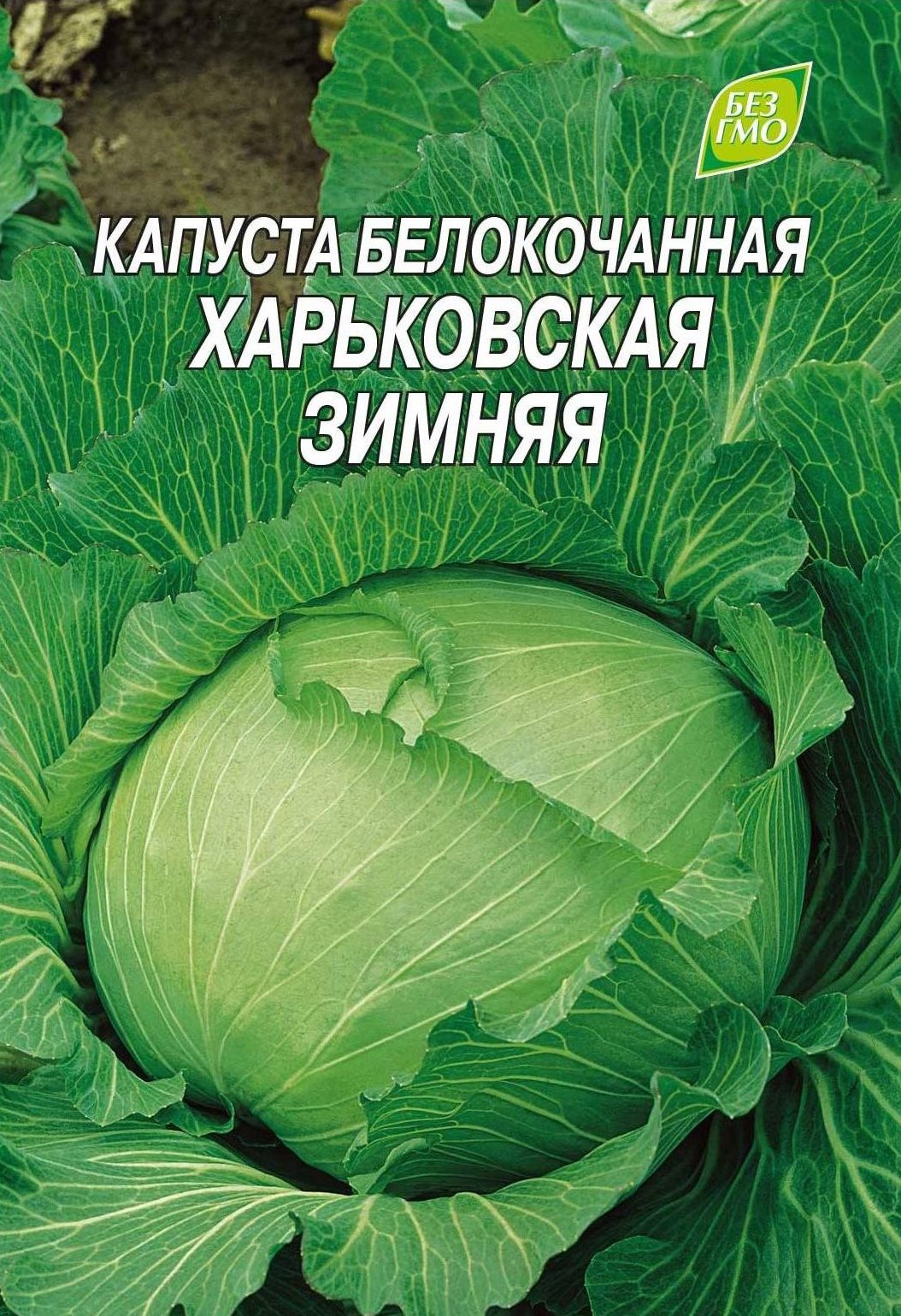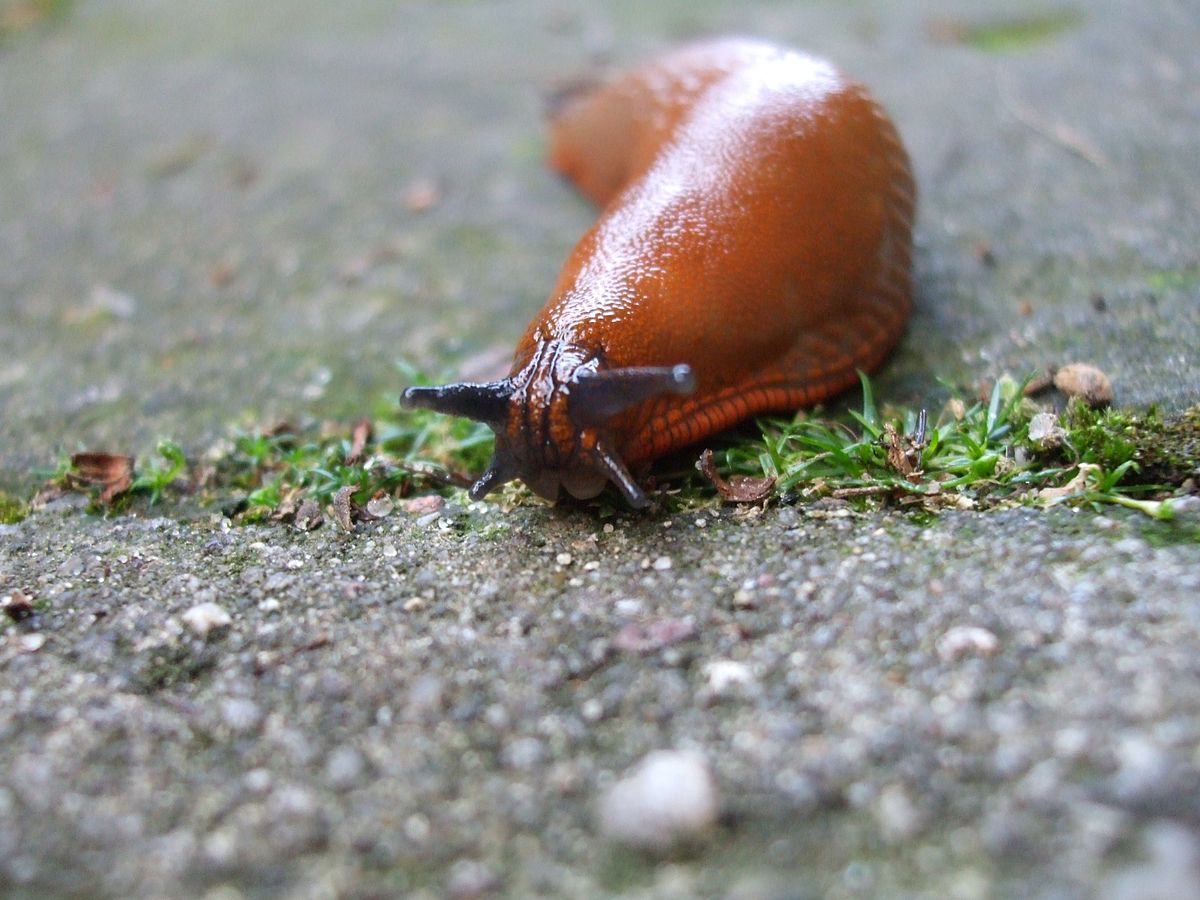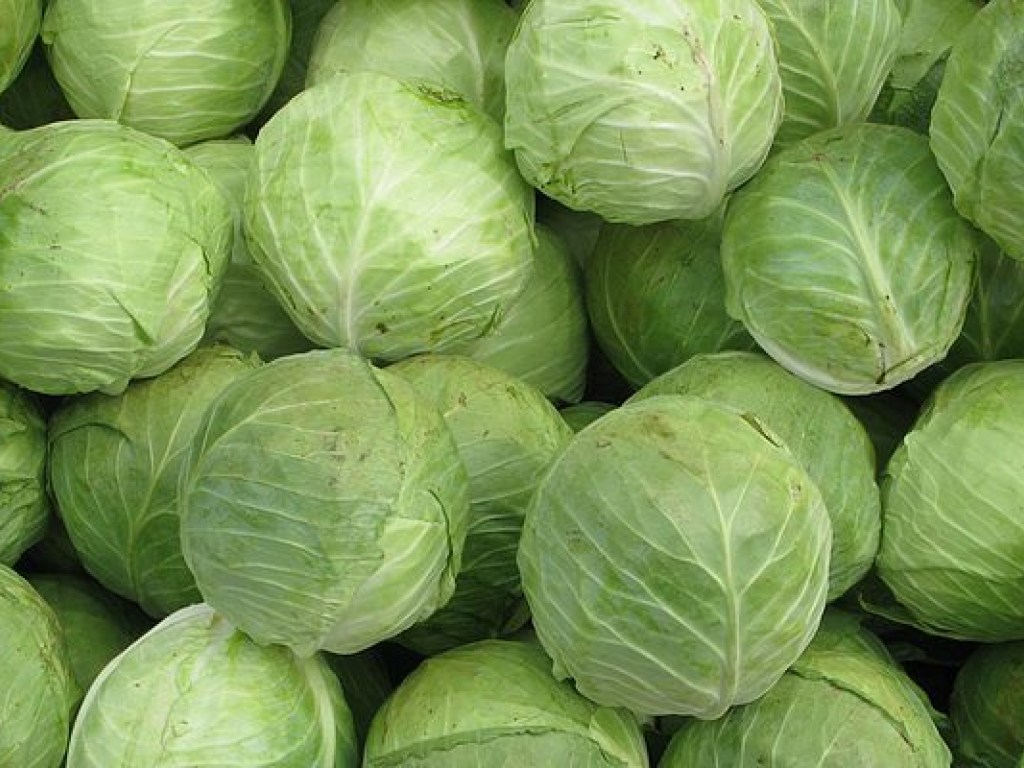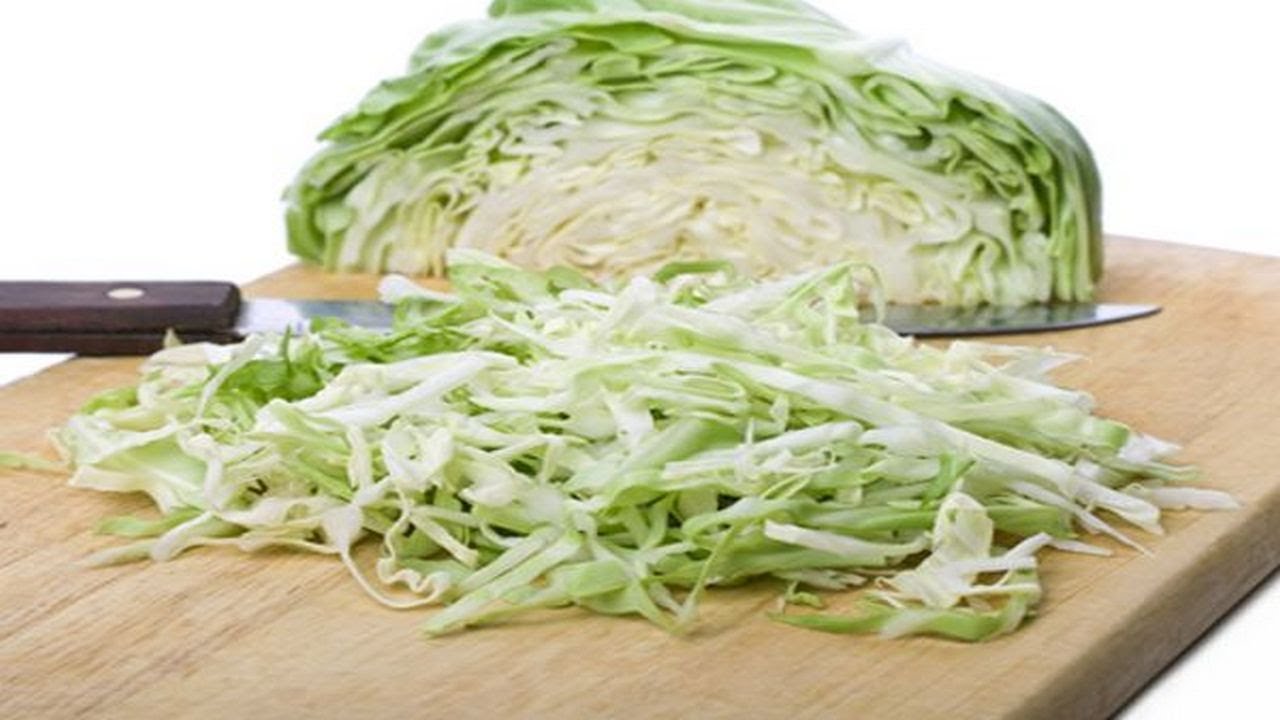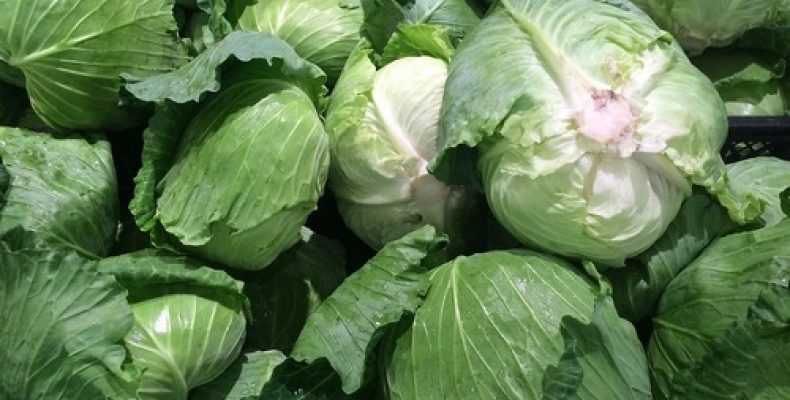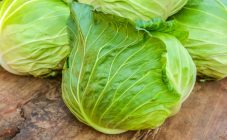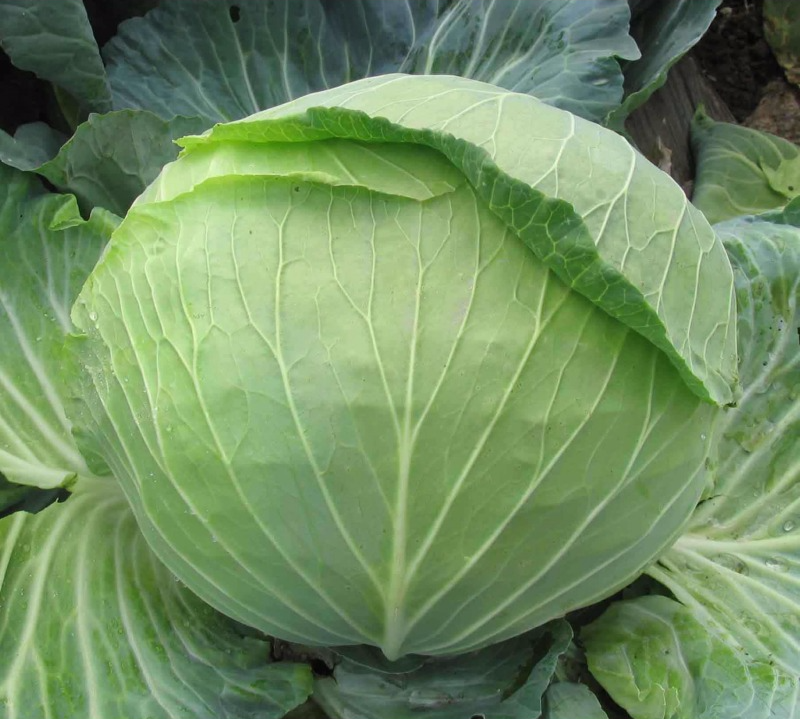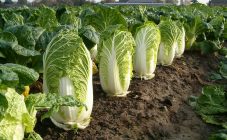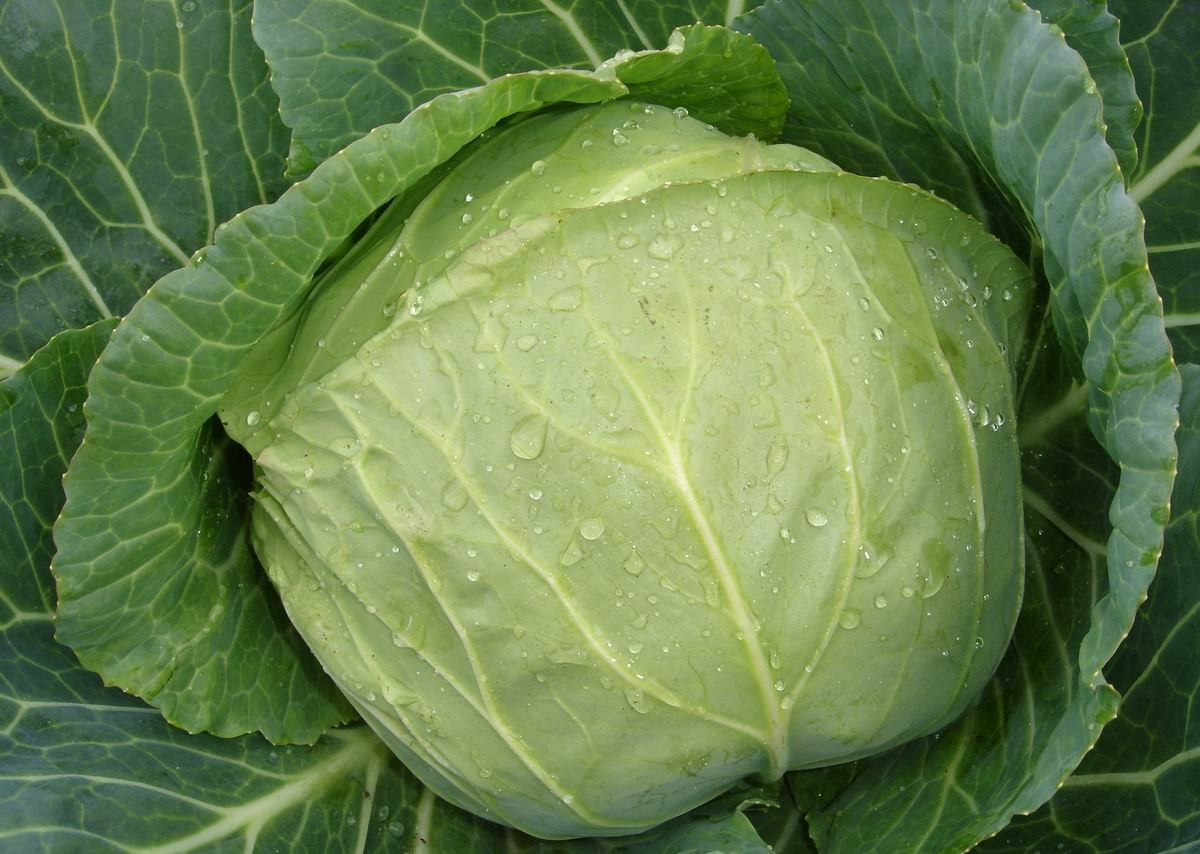Content:
Cabbage Kharkiv winter late - the variety was bred by Ukrainian breeders by crossing two varieties Dauerweis and Amager 611. At first, it was planted only in Ukraine, in Kharkov. Gardeners appreciated the new variety, its positive qualities and began to grow it in Europe and Asia.
Characteristics and description of the variety
It tolerates adverse weather conditions. Lack of moisture does not reduce the yield. It tolerates heat up to + 40 ° С, frosts up to -3 ° С. You can harvest until late autumn. It is resistant to viral diseases of cabbage.
Kharkiv cabbage is good in fresh and sauerkraut, it is stored for a long time, does not deteriorate during transportation. Suitable for salads, pickling, pickling, preparations for the winter.
| Assignment of the variety | Universal |
|---|---|
| Kochan (appearance) | Rounded flat, dense, does not crack |
| Colour | Green |
| The size | 85-115 cm |
| Fork weight | 2-3.6 kg |
| Ripening time | 155-160 days |
| Productivity per square meter | 11-12 kg |
Agricultural technology of cultivation
Kharkiv late cabbage is grown in two ways:
- Sowing seeds in the ground, that is, in a seedless way.
- Rassadny.
Benefits of the seedless method:
- Seedlings are not transplanted to a new place; plants do not need to get used to the open ground painfully.
- Sown with seeds, plants take root faster and fruits ripen faster.
- Heads of cabbage reach full maturity 2–3 weeks earlier.
A place for sowing cabbage should be allocated in the southern sunny territory of the garden plot. Cabbage in one place should be grown after 4 years, it grows well after onions, potatoes, cucumbers and legumes. Depending on the weather conditions of the region, seeds are planted in the ground in late April - early May.
Dry soil is moistened a day before sowing. Seeds are planted in rows, the distance between which is 65–75 cm. The sowing depth is 1.5–2 cm. It is not recommended to place seeds closer to the surface of the earth - this will affect their germination. When the seeds sprout, small and extra shoots are discarded, leaving only the strongest plants.
Seedling care: watering, feeding, loosening.
Seedling method of growing late cabbage
To grow seedlings, you need to prepare the soil, dishes, seeds. The soil can be prepared from autumn and winter and stored until spring. It is recommended to buy ready-made soil or mix it yourself from peat (75%), turf and sand. It is recommended to disinfect such a mixture a week before sowing.
Seed preparation
Sizing is needed in order to select the largest and highest quality seeds. They need to be soaked in a 3% salt solution. The lungs will float, the heavy ones will sink to the bottom. Water with light seeds is drained. Large ones are washed and dried. For disinfection, soak for 25 minutes in a 1% solution of potassium permanganate.
The seeds are soaked for a day in water (+ 15 ... + 20 ° С), placed in a warm place, after 4 hours the water is changed and the seeds are mixed. After swelling, the grains are placed on a damp cloth and quenched for 24 hours in a refrigerator at a temperature of + 1 ... + 3 degrees.
Preparing seedling containers
For sowing and growing seedlings at home, use cups, pots, boxes, cassettes. There should be holes in the bottoms of the dishes so that water does not stagnate.
For container disinfection: dissolve 5 g of potassium permanganate in a bucket of hot water, this solution is used to process seedling dishes and all planting tools.
Sowing and care
Seeds are planted 45-50 days before transplanting into open ground. For full growth, cabbage seedlings need a sunny place (+ 18 ... + 20 degrees).
Seedling care is standard: watering, feeding, weeding, loosening. Seedlings need intensive watering for the first week. After transplanting into open ground, watering the first week daily, later 1-2 times a week.
Weeds are removed as needed and the soil is loosened. Kharkiv cabbage grows well if it is fed on time and correctly. Fertilizers are applied 2-3 times during the season. It is best to do top dressing during intensive leaf growth and head formation. Mineral fertilizers are used for feeding.
Pests and diseases
Kharkiv late cabbage staunchly resists the main diseases of this vegetable. She is not afraid of mucous bacteriosis and necrosis. Resistant to fusarium wilt at an early age. Cabbage is rarely affected by rot. Aphids or garden fleas do not appear on the leaves.
If grown improperly on acidic and heavy soils, it can be affected by keel. For prevention, you need to choose the right site and soil for planting.
Pests: slugs, caterpillars - can damage the plant.
To fight slugs, you need to take a liter jar of wood ash, 2 tablespoons of table salt, 2 tablespoons of ground black pepper, 2 tablespoons of mustard powder, mix and sprinkle on cabbage beds.
Harvesting rules
Kharkiv winter cabbage is distinguished by high yield and long shelf life. When the cabbage is ripe, it is very important to harvest the crop correctly and send it to "wintering" - storage.
Kharkiv cabbage tolerates heat and cold well, so there is no need to rush to harvest. Heads of cabbage grow until late autumn and do not crack. They are not afraid of light frosts down to -6 ° С. But exposure to such low temperatures should not be long-term, otherwise the heads of cabbage will rot during storage.
You can not leave cut heads of cabbage even with a frost of -1 degrees, frozen leaves and stumps on the cuts will rot and spoil the entire crop.
Do not harvest cabbage immediately after frost. The heads of cabbage should thaw in the bud for 5 days. If you cut off the frozen heads of cabbage at once, they will rot in a month, and black leaves will appear.
The collected heads of cabbage cannot be immediately put into the cellar for storage, even if the harvest was on a sunny warm day. Before storage, cabbage should be dried for at least 5 hours under a canopy, but not in the sun. Cabbage withers in direct sunlight.
After harvesting, it is necessary to sort and remove cabbage waste. Eat small non-standard heads of cabbage first, leave the leaves for livestock feed, put the remaining green garbage in the compost.
Advantages and disadvantages of the variety in comparison with other varieties
Kharkov winter cabbage differs from other varieties in the compactness of the leaf socket. Her leaf size is medium, almost without roots, raised above the surface of the garden, so the plant occupies a small area compared to other varieties. Kharkov winter can be planted denser than Moscow late.
Kharkiv late-ripening forms heads of cabbage at the end of summer, but on the other hand, it can be in the garden until frost, without suffering from the cold and without cracking the heads. The taste of cabbage will only improve during this time.
The first autumn frosts will not damage the crop.Cabbage becomes only sweeter and then sauerkraut is especially tasty.
The covering leaves adhere tightly to the head of cabbage and protect the edible part. On the cut, the color of the head of cabbage is white, the stalk is large, but not thick. There are no hard veins inside the plug. There is little waste.
93% of the edible head of cabbage is used for food. The leaves are juicy, sweet, aromatic. There are many useful substances in cabbage: vitamin C, fiber, trace elements - potassium, sulfur, zinc.
The main use of Kharkov cabbage: storage and pickling. But even fresh, you can cook many dishes from it: fresh salads, cabbage soup, borscht, cabbage rolls, pie fillings.
Housewives like sauerkraut winter cabbage most of all in the cold classical way, because it is juicy and survives wintering without changes in taste. There are also hot ways to harvest cabbage for the winter. If the cabbage, along with other vegetables, is boiled and rolled up for the winter, then the whole family will enjoy delicious salads and snacks until spring.
The buyer can purchase seeds in any store to grow Kharkiv late winter cabbage on his site. Sometimes gardeners grow their own cabbage seeds on their own if they like the variety of the variety.
